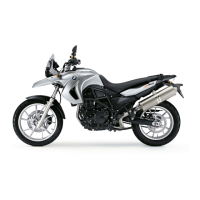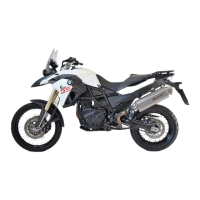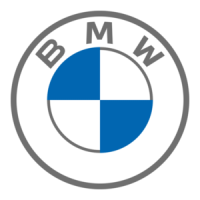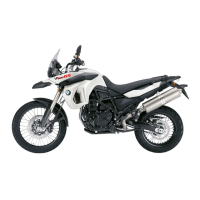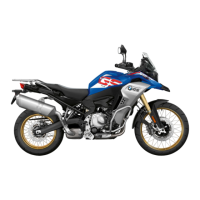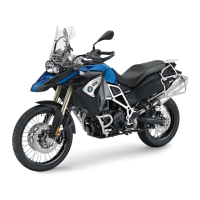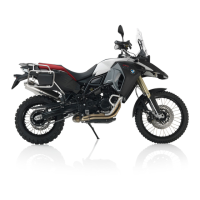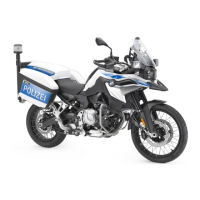Do you have a question about the BMW F700 gs and is the answer not in the manual?
Basic introduction to the manual's structure and purpose.
Explains common symbols and abbreviations used in the manual.
Describes custom equipment options and general technical information.
Notes on potential differences between the manual and the actual vehicle.
Identifies components on the left side of the motorcycle.
Identifies components on the right side of the motorcycle.
Details components and storage located beneath the seat.
Identifies components accessible under the trim panel.
Describes left and right handlebar switchgear functions.
Details the layout and functions of the motorcycle's instrument cluster.
Explains multifunction display readouts and symbols.
Details telltale lights, fuel, service, temp, tyre pressure, and general warnings.
Covers ignition switch, electronic immobiliser, and clock settings.
Explains reading display, stopwatch, and general controls.
Details lights, indicators, hazard flashers, grip heating, ABS, and ASC.
Covers clutch, brakes, mirrors, suspension, tyres, and headlight adjustments.
General info, activation methods, and battery conservation.
Details alarm triggers, deactivation, programming, and remote control management.
Covers rider protection, handling, and loading.
Guides on starting, running-in, system checks, and basic maintenance.
Details refuelling, parking, and laying up the motorcycle.
Explains ABS operation, design, and function.
Details ASC operation, design, and function.
Explains RDC system function, monitoring, and temperature compensation.
Recommends approved parts and explains power socket usage.
Instructions for luggage lashing, cases, and topcase operation.
Describes the standard toolkit and general maintenance guidelines.
Covers engine oil checks, brake pad thickness, and fluid levels.
Details coolant checks, clutch function, and tyre tread depth.
Explains chain sag/wear and wheel removal/installation.
Covers replacing bulbs and removing/installing body panels.
Details battery maintenance, jump starting, and charging procedures.
Recommends care products and washing guidelines.
Covers paint care, protective wax, laying up, and restoring the motorcycle.
Lists fault rectifications and fastener torque values.
Details engine specs, fuel grades, and transmission ratios.
Covers suspension, brakes, wheels, and tyre specifications.
Information on electrics, battery, frame, and motorcycle dimensions.
Lists vehicle weights and performance data.
Information on dealerships, services, and mobility assistance.
Explains running-in checks, service intervals, and service records.
FCC and Industry Canada compliance for Tire Pressure Control.
Basic introduction to the manual's structure and purpose.
Explains common symbols and abbreviations used in the manual.
Describes custom equipment options and general technical information.
Notes on potential differences between the manual and the actual vehicle.
Identifies components on the left side of the motorcycle.
Identifies components on the right side of the motorcycle.
Details components and storage located beneath the seat.
Identifies components accessible under the trim panel.
Describes left and right handlebar switchgear functions.
Details the layout and functions of the motorcycle's instrument cluster.
Explains multifunction display readouts and symbols.
Details telltale lights, fuel, service, temp, tyre pressure, and general warnings.
Covers ignition switch, electronic immobiliser, and clock settings.
Explains reading display, stopwatch, and general controls.
Details lights, indicators, hazard flashers, grip heating, ABS, and ASC.
Covers clutch, brakes, mirrors, suspension, tyres, and headlight adjustments.
General info, activation methods, and battery conservation.
Details alarm triggers, deactivation, programming, and remote control management.
Covers rider protection, handling, and loading.
Guides on starting, running-in, system checks, and basic maintenance.
Details refuelling, parking, and laying up the motorcycle.
Explains ABS operation, design, and function.
Details ASC operation, design, and function.
Explains RDC system function, monitoring, and temperature compensation.
Recommends approved parts and explains power socket usage.
Instructions for luggage lashing, cases, and topcase operation.
Describes the standard toolkit and general maintenance guidelines.
Covers engine oil checks, brake pad thickness, and fluid levels.
Details coolant checks, clutch function, and tyre tread depth.
Explains chain sag/wear and wheel removal/installation.
Covers replacing bulbs and removing/installing body panels.
Details battery maintenance, jump starting, and charging procedures.
Recommends care products and washing guidelines.
Covers paint care, protective wax, laying up, and restoring the motorcycle.
Lists fault rectifications and fastener torque values.
Details engine specs, fuel grades, and transmission ratios.
Covers suspension, brakes, wheels, and tyre specifications.
Information on electrics, battery, frame, and motorcycle dimensions.
Lists vehicle weights and performance data.
Information on dealerships, services, and mobility assistance.
Explains running-in checks, service intervals, and service records.
FCC and Industry Canada compliance for Tire Pressure Control.
| Displacement | 798 cc |
|---|---|
| ABS | Standard |
| Fuel System | Electronic fuel injection |
| Engine Type | Liquid-cooled, 4-stroke, in-line two-cylinder |
| Max Power | 75 hp (55 kW) at 7, 300 rpm |
| Max Torque | 77 Nm @ 5, 300 rpm |
| Transmission | 6-speed |
| Fuel Capacity | 16 liters |
| Seat Height | 820 mm (32.3 inches) |
| Wet Weight | 209 kg (461 lbs) |
| Front Suspension | Telescopic fork, 41 mm |
| Rear Suspension | Cast aluminum dual swing arm, central spring strut |
| Front Brake | Dual 300 mm discs, 2-piston floating calipers |
| Rear Brake | Single 265 mm disc, single-piston floating caliper |
| Dry Weight | 186 kg |


